Artists' Books
Artists' Books

Disproof Does Not Equal Disbelief
An unconventional invocation of Michael Stevenson's practice over the past 35 years.
From his refuge in upstate New York—the studio/ living complex where he enacted a late pivot back to figuration—the American painter Philip Guston once offered the following outburst to the question of how such a turn could happen.
"What kind of man am I, sitting at home, reading magazines, going into frustrated fury about everything and then going into my studio to adjust a red to a blue?"
Over time, this sparse utterance takes on an architectural form in the imagination, a model that proposes a tantalizing proposition when fleshed out. The painter's words situate us in two distinct yet adjacent rooms. The first: a lounge with a TV, its live feed constantly aflicker. The second, a space that's more sequestered, which we can simply understand as a place of production: "the studio." Between these spaces, the painter, often working through the night, is also the viewer or reader, shuffling back and forth as he navigates these two rooms. At a certain point, night becomes day, and we shuffle back and forth together, the presence of one room arriving in the other.
Published following the eponymous exhibition at KW Institute for Contemporary Art, Berlin, in 2021.
Described as an “anthropologist of the avant-garde”, Michael Stevenson (born in 1964 in Inglewood, New Zealand, lives and works in Berlin) investigates the mythology that surrounds renowned and controversial events which have been significant in the spheres of both art and politics.
Graphic design: Will Holder

Quelle Aventure !
Reference monograph on the work of one of Belgium's most discreet, yet most important, female artists, with a dozen essays and contributions.
The work of Jacqueline Mesmaeker is intangible, discreet and captivating. Starting from analytical intentions and experimental protocols linked to perception and representation, her practice remains anchored in a literary and poetic universe, including references to Lewis Carroll, Mallarmé, Melville or Paul Willems. Minimal, sometimes even unnoted, her rare and precise work is nonetheless present. It willingly takes over space, playing with the actual and symbolic architecture, revealing the structures and lines of force, but also the errors, by thwarting their perspectives or correcting them with delicate touches.
In the year of 2020, CC Strombeek, BOZAR and Museum Roger Raveel have exhibited new selections of Mesmaeker's fragile ensembles; poetic works that evade every semantic description. CC Strombeek succeeded—in consultation with the artist—to reconstruct the work Enkel Zicht Naar Zee, Naar West (1978) to its original presentation, after 35 years. The work consists of 5 projections captured on transparent, natural silk scrims. They show a flock of flying birds, circulating and mingling in space, appearing and disappearing through the veils.
This book forms a catalogue of Mesmaeker's trilogy of solo-exhibitions in 2020: Ah, Quelle aventure ! at Bozar (May–July 2020) and CC Strombeek (January–March 2020) and De page en page at Museum Roger Raveel (December 2020–March 2021).
Jacqueline Mesmaeker (born 1929 in Brussels) started her career as fashion designer from 1962 till 1972, before she turned to visual and artistic issues. Drawing, an art form she teached in several art schools (ERG, La Cambre...), runs throughout her rich work that includes installation, video, photography, writing and design. She won the Norwich East Award, in 1996.
Texts by Luk Lambrecht, Lieze Eneman, Michel Baudson, Jean-Michel Botquin, Saskia De Coster, Anne Pontégnie, Melanie Deboutte, Sophie Lauwers, Philippe Van Cauteren.

Side Magazine #02 – The Moped Rider
The second issue of the editorial discursive space for the Bergen Assembly triennial, conceived by Saâdane Afif, is dedicated to the manifold figure of the Moped Rider, which is approached differently by the seven contributors.
Side Magazine is conceived as a site of research for the fourth edition of Bergen Assembly convened by Saâdane Afif. Yasmine d'O., who has been invited as curator of the upcoming edition, will be the executive editor.
Side Magazine is dedicated to the seven characters in The Heptahedron, a play written by the French poet, essayist, and scholar Thomas Clerc in 2016. In order of apparition these characters are the Professor, the Moped Rider, the Bonimenteur, the Fortune Teller, an Acrobats, the Coalman, and the Tourist.
The second issue of Side Magazine is dedicated to the manifold figure of the Moped Rider, which is approached differently by the seven contributors. These include the film critic Lars Ole Kristiansen, who follows Nanni Moretti's vespa through Rome in the movie Caro Diario (1993), playing the role of a tourist in his own life. A reprinted chapter from Michele Bernstein's autofiction novel All the King's Horses (1960), tells the tale of late-night meanderings through Paris, and Kristian Vistrup Madsen addresses the changing intimacy between the musing figures in Caspar David Friedrich's series of paintings Two Men Contemplating the Moon (1819–c. 1830). Side Magazine's executive editor Yasmine d'O. is in conversation with curators Marcella Lista and Lou Ferrand about the place and movement of visitors in exhibition spaces.
Edited by Saâdane Afif and Yasmine d'O.
Contributions by Haci Akman, Michèle Bernstein, Lou Ferrand, Pierre-Henry Frangne, Patrick Jagoda, Yasmine d'O., Lars Ole Kristiansen, Marcella Lista, Kristian Vistrup Madsen.

Success in Failure
First monograph devoted to the work of video artist and performer Wolfgang Stoerchle (1944-1976), an artistic figure of the Californian scene in the 1970s, based on extensive research and three international exhibitions.
Wolfgang Stoerchle is a particularly notable artistic figure of the early seventies who left a certain but little advertised mark on a generation of Californian artists, especially through videotapes and performances involving his body as raw material. His short but eventful life is surrounded by rumors, and his abrupt death in 1976 may have emphasized the myth around him even more. His entire body of work was produced in eleven years, between 1965 and 1976. Forty-five years after he passed away, his name still drifts across the West Coast art world, awaiting wider recognition.
Wolfgang Stoerchle: Success in Failure is the first monograph on the artist's work, written by Alice Dusapin who has dedicated extensive research into his life and work since 2017 and organized several international exhibitions during this time (Ampersand, Lisbon; Gallery Overduin & Co, Los Angeles; Gallery Air de Paris and Museum of Contemporary Art of Rome).
The publication includes interviews with Daniel Lentz, Paul McCarthy, Matt Mullican, David Salle, Helene Winer, and an unpublished review by James Welling, alongside ephemera and documentation of Stoerchle's video works and performances, as well as rarely seen sculptures, installations, and paintings.
Edited by Alice Dusapin, with Justin Jaeckle.
Texts by Alice Dusapin and James Welling; interviews with David Salle, Helene Winer, Matt Mullican, Paul McCarthy, Daniel Lentz.
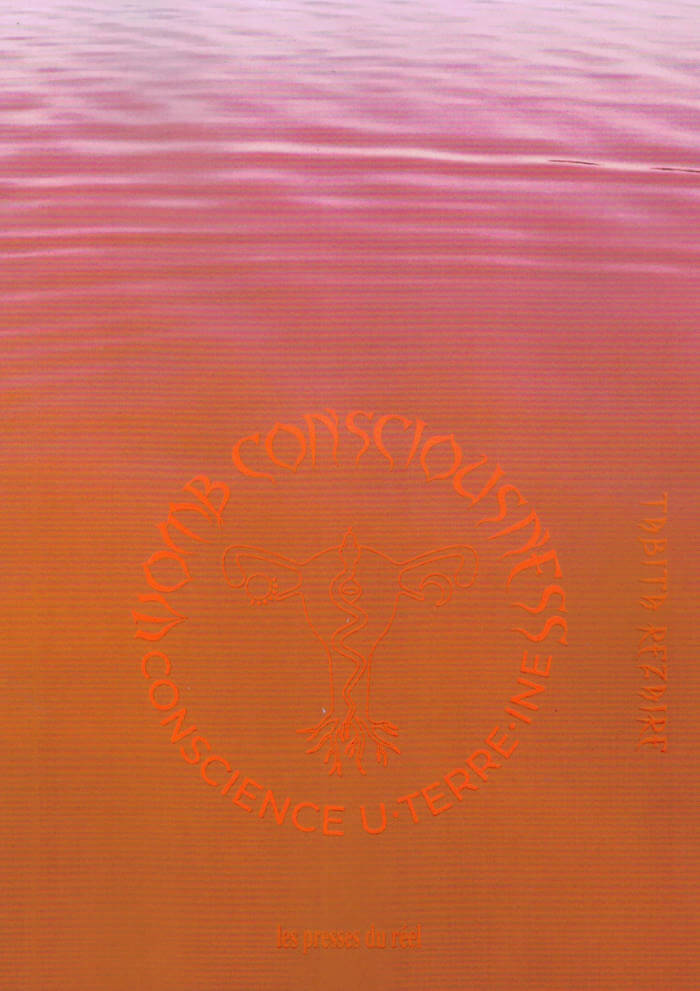
Womb Consciousness
This collective publication is a singular invitation to discover or deepen the universe of Tabita Rezaire, at the intersection of new technologies, decolonial healing, spirituality and the political history of science. Through numerous contributions from poets, theorists, artists and her friends and relatives, she invokes the wisdom of the womb: the mother womb, the earth womb, the cosmic womb, for us to receive its grace.
This book is part of a series of monographic publications co-published with the Espace multimédia Gantner devoted to women artists in connection with technology.
Tabita Rezaire (born 1989 in Paris) is an artist, yoga teacher, doula, and farmer. Her cross-dimensional practice envisions network sciences—organic, electronic and spiritual—as healing technologies. Embracing digital, corporeal and ancestral memory, she digs into scientific imaginaries and mystical realms to tackle the colonial wounds and energetic imbalances that affect the songs of our body-mind-spirits. Tabita Rezaire is based in French Guiana, where she is birthing AMAKABA (http://amakaba.org).
Rezaire's practice explores decolonial healing through the politics of technology, spirituality Navigating architectures of power—online and offline—her works tackle the pervasive matrix of coloniality . Disseminating light, her digital healing activism offers substitute readings decentering occidental authority, hoping to assist in the "dismantling [of] our white-supremacist-patriarchal-cis-hetero-globalized world screen".

Pink Moon
In Pink Moon, artist Marcel Dzama (b.1974) presents a raft of new works inspired by travelling through Mexico and Morocco which touch on the wonder that travel and the strange immersion in cultures aside from one’s own can so often engender. Taking visual cues from the evocative textures and colours around him, Dzama successfully captures the spirit of place, while communicating something essentially human in the experience of those places.
Coming at a time of isolation, of stasis for so many, this book engages the imagination in a broad, borderless project, allowing the viewer access to the thrill of discovery and the excitement of the new. Since rising to prominence in the late 1990s, Marcel Dzama has developed an immediately recognizable visual language that investigates human action and motivation, as well as the blurred relationship between the real and the subconscious. With an introduction by Duro Olowu and interview by Craig Taylor.
108 p, ills colour & bw, 22 x 30 cm, pb, English

Rubbings Catalogue 1984-2016
One of Matt Mullican's central and most consequential inventions, the so-called “Rubbings,” are a kind of “frottages,” a technique the artist uses to produce specific pictures. The book presents a catalogue of the Rubbings on canvas from 1984 to 2015. It comprises around 500 works, documented by images and catalogue entries (the book also contains an essay by Dieter Schwarz).
From the beginning of his career, Mullican looked for pictures that would not be paintings; thus, he used banners, the traditional carriers of signs, posters, and, in 1984, he realized his first Rubbing. He used a cardboard plate on which the canvas was placed; by rubbing with an oil stick the cardboard reliefs, forms became visible on the canvas. This way, Mullican was able to transfer complex representations onto canvas; the result is a picture of something that is not present, it is a form of copy. The cardboard plates may be used for other works and so the imagery can reappear in different configurations. Each Rubbing is a single work and at the same time a reproduction, like a print, part of a sequence which contains picture elements from different sources.
Following the Rubbings from 1984 to recent times, it becomes visible that they represent the motives and themes the artist worked with over the years. The sequence of the Rubbings appears therefore like a diary of Mullican's work.
Published on the occasion of the exhibition “Nothing Should Exist” at Kunstmuseum Winterthur, Switzerland, from June 11 to October 16, 2016.
Working in the fields of performance, installation, digital technology and sculpture, Matt Mullican (born 1951 in Santa Monica, lives an works in New York) is seeking to develop a cosmological model based on a personal vocabulary combining the formal and the symbolic. Hypnosis and cartography are his principal modes of operation. He explores functional sign systems of his own devising through activities under hypnosis, in a permanent oscillation between the real and its schematization, between fiction and its physical reality.
Edited by Dieter Schwarz.
Text by Dieter Schwarz.
published in June 2016
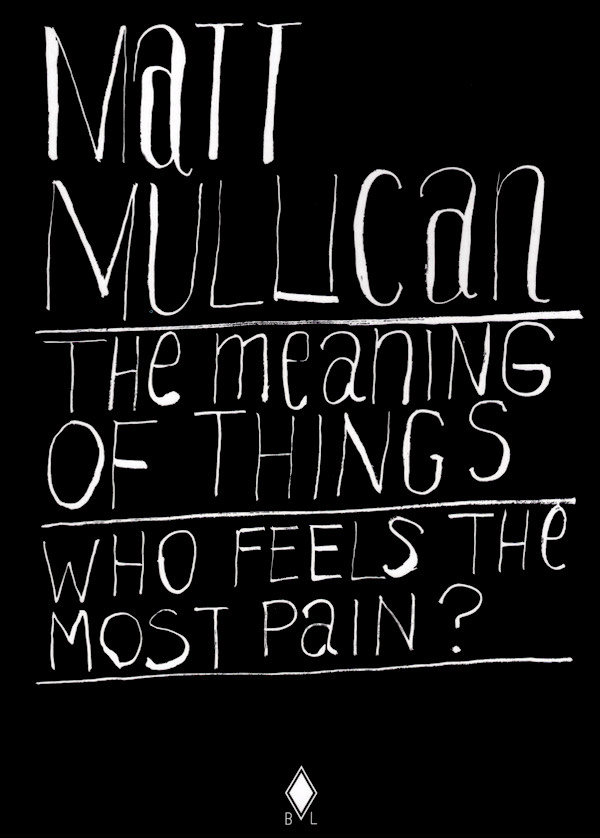
The Meaning of Things (who feels the most pain?)
This artist's book is the book-form of a work by Matt Mullican, "The Meaning of Things (who feels the most pain?)" (2014), consisting of 676 collages and texts on sheets of standard printing paper.
At the approximate center of each collage is a small image that appears to be a printout of an image procured from the Internet. Around the images are hand-drawn, quasi-calligraphic marks (in black only), curved, giving the impression of an "organic" form in the manner of ornate, rococo frames. The series develops a narrative of interests, practices and collective representations that suggest and disavow each other. Mullican deftly challenges this simple to-and-froing of "virtual" and "real" by suspending the idea that only through the material/physical printing out of the digital images, the content of the images is "restored" back into the "real"—to grasp the "meaning of things" comes at the price of "feeling the most pain".
Working in the fields of performance, installation, digital technology and sculpture, Matt Mullican (born 1951 in Santa Monica, lives an works in New York) is seeking to develop a cosmological model based on a personal vocabulary combining the formal and the symbolic. Hypnosis and cartography are his principal modes of operation. He explores functional sign systems of his own devising through activities under hypnosis, in a permanent oscillation between the real and its schematization, between fiction and its physical reality.
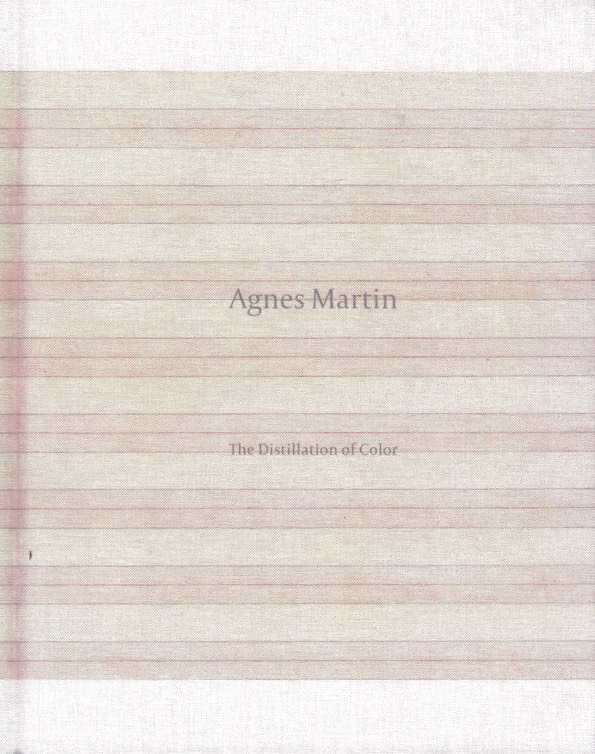
The Distillation of Color
This handsomely designed, concise volume celebrates Agnes Martin's pursuit of beauty, happiness and innocence in her nonobjective art created while living in the desert of New Mexico. From her multicolored striped works to compositions of color-washed bands defined by hand-drawn lines, to the deep gray Black Paintings that characterized her work in the late 1980s, Martin's treatment of color in each of these phases is examined.
A particular emphasis is placed on the latter half of her career and the broadening vision that developed during her years working in the desert, which crystalized her quest to deepen her understanding of the essence of painting, unattached to emotion or subject, yet radiant and meditative in its pure abstraction.
With editorial contributions by a selection of writers whose cross-genre works span art writing, essay and memoir, this book expands an approach to Martin's paintings beyond a purely art historical lens, bringing new voices into the conversations around her career, inviting a rediscovery of her enduring legacy. An essay by author Durga Chew-Bose provides a poetic exploration of color; the writer Olivia Laing (author of The Lonely City) discusses the nature of solitude in her text; and Bruce Hainley uses a 1974 essay by Jill Johnston as a jumping-off point to delve into Martin's life during her years in New Mexico.

Bookmarks of sorts
Afternoon Editions no. 5: a collection of found papers annotated by Jeroen Peeters, titled Bookmarks of sorts. During several years Jeroen Peeters collected notes left by readers in library books: faded reader tickets, scraps with notes, a shopping list, train tickets and other little papers used as bookmarks. He noted each time the date and the book in which they were found. Afterwards he wrote commentaries to this collection, an essay on alternative reading practices, marginalia and extra-illustration, on the exchange between readers and the imaginary community lingering in all those library books.

Weaknesses
Afternoon Editions no. 2: text and drawings by Chrysa Parkinson titled Weaknesses. Between January and March 2019 Time has fallen asleep in the afternoon sunshine was presented as a solo-exhibition at Index Foundation in Stockholm. During this period Chrysa Parkinson was invited as a guest writer for Afternoon Editions. Weaknesses is a leap in memory.

On the Self-Reflexive Page II
Originally published in 2010, ‘On the Self-Reflexive Page’ is part artist’s book and part essay, part literary excavation and part typographical miscellany. For this second incarnation of Louis Lüthi’s anthology of thematically arranged pages, the original material has been significantly expanded and revised. Like its predecessor, the new version proposes a typology of nonverbal elements found in novels, short stories, and essays. In each of the pages reproduced here, the prose is interrupted by one of these nonverbal elements, from black or blank pages, drawings or collages, photographs or film stills, to fragments of text or visual poems that are distinct from a conventional page layout.

The Carrier Bag of Recipes
To write, to boil, to cook ideas, stir them all, spice them up with some references and again write and knead the dough out of it. To what forms can recipes lead? This is the central question of this thesis. Recipes follow a certain literary genre. Whether carved on stones or written along the horizontal edges of a notebook, they all conform to a specific structure. In the text I analyse these structures, to show the way in which the recipe itself unveils its deeper meanings, concerns, and secrets. Why, when, who and how are fundamental questions I ask, while I read out loud a recipe about macaroni from the 1495 – or when I look at a Sumerian tablet where a Cuneiform system of writing states that epilepsy is a tease of the demons. Material form, literary form and social interaction are the flavors I want to bring up from each recipe I use as an example, hoping to find a way to understand how these three elements are melted together to form an interconnected circle.
Published Nov, 2021.

David Robilliard Notebooks 1983-1988
This book follows the first exhibition of Robilliard’s notebooks, ‘Disorganised Writings and Sketches’ with Rob Tufnell in Cologne in April 2019. It was made with support from the Elephant Trust and the book’s designers, A Practice for Everyday Life and with assistance from James Birch, one of David’s gallerists, and Chris Hall, custodian of the estate of Andrew Heard. The book is dedicated to Andrew Heard.
Rob Tufnell presents a new publication of extracts from the notebooks of the poet and artist David Robilliard (b.1952 – d.1988). After his premature death from an AIDS-related illness in 1988, Robilliard left a large number of notebooks in the care of his close friend and fellow artist Andrew Heard. These were obsessively filled with drafts of poems, diary entries, addresses and telephone numbers, blunt observations, quiet reflections, short stories, ideas for paintings, portraits and crude drawings. Robilliard’s superficially simple, pithy prose and verse is riddled with the dichotomies of an era that was both exuberant and miserable. His notebooks reveal his creative process, his interests, ideas, ambitions and then his illness but always embody his often repeated belief that ‘Life’s not good it’s excellent.’
Many of the books contain the inscription: ‘If found please return to 12 Fournier Street, London E1. Thank you’ – the home and studio of his patrons, Gilbert & George. In their lament ‘Our David’ (1990) they describe their protégé as:
“...the sweetest, kindest, most infuriating, artistic, foul-mouthed, witty, sexy, charming, handsome, thoughtful, unhappy, loving and friendly person we ever met... Starting with pockets filled with disorganised writings and sketches, he went on to produce highly original poetry, drawings and paintings.”
The publication exists in two editions: yellow and pink.

Patterns
This publication contains a collection of patterns designed by Dutch graphic designer Karel Martens. Although Martens is widely recognised for his specialisation in typography, the dozens of full-page patterns shown here are devoid of any text, allowing the sequence to become a mesmerising pattern in itself. Designed by Martens & Martens.

The Tiger's Mind
The project initiated by artist and filmmaker Beatrice Gibson and typographer Will Holder, based on the eponymous score written by Cornelius Cardew in 1967.
In 2010, a production process was instigated by filmmaker Beatrice Gibson and typographer Will Holder, with the intention of using British composer Cornelius Cardew's musical score The Tiger's Mind as a means of producing speech. Since the score concerns the changing relations between six characters in production, practitioners from other fields (musicians and visual artists) were invited to three conversations at Künstlerhaus Stuttgart, Kunstverein in Amsterdam, and CAC Brétigny.
After each conversation, a printed document was made and distributed amongst the characters, to serve as a score for subsequent conversations. Any other ends would be found in conversation. After some time it became clear that a film would be made: Beatrice Gibson's The Tiger's Mind. This book is a document of its making.
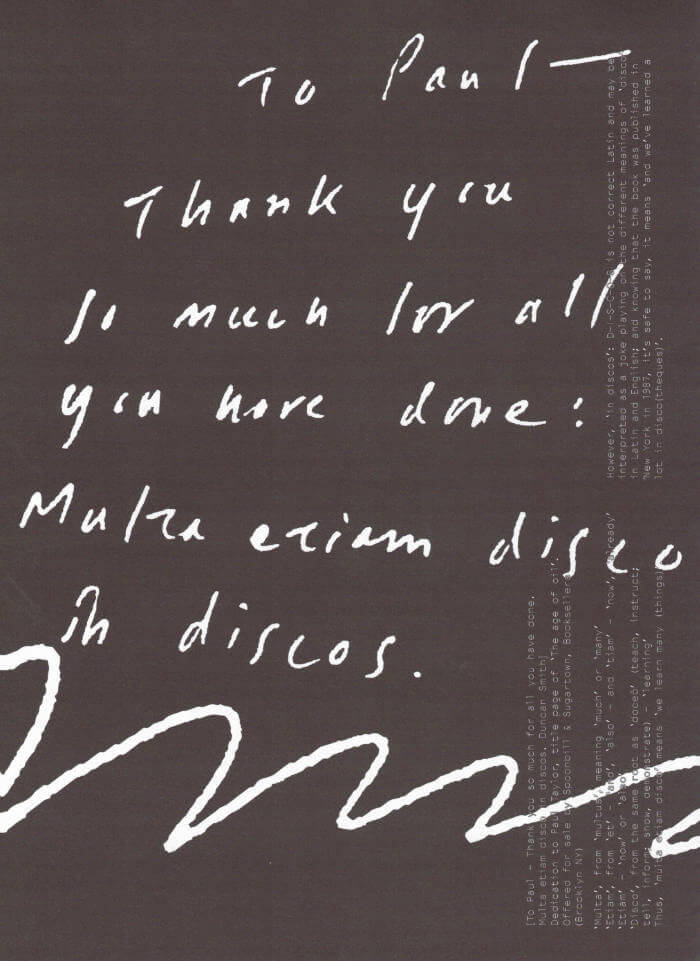
Catalog Issue 16 — 'Annotations'
Catalog is a serial publication about cataloging, written by Lieven Lahaye and designed by Ott Metusala. This is Catalog #16, ‘Annotations’, it’s a collection of sources, notes, annotations, traces, paths and earworms related to ongoing research.
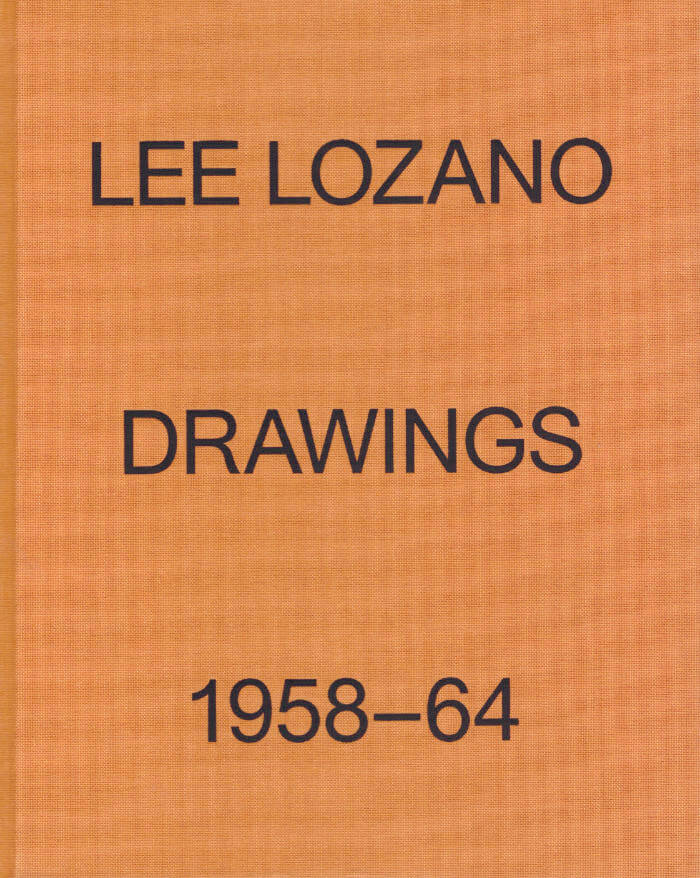
Lee Lozano: Drawings 1958-64
This 640-page volume comprises drawings from a critical six-year period in the development of American painter and conceptual artist Lee Lozano's (1930-99) practice. Her daring, facetious sketches investigate issues of gender and the body through the erogenous anthropomorphization of tools.
Lee Lozano: Drawings 1958-64 includes two newly commissioned essays by Helen Molesworth and Tamar Garb.
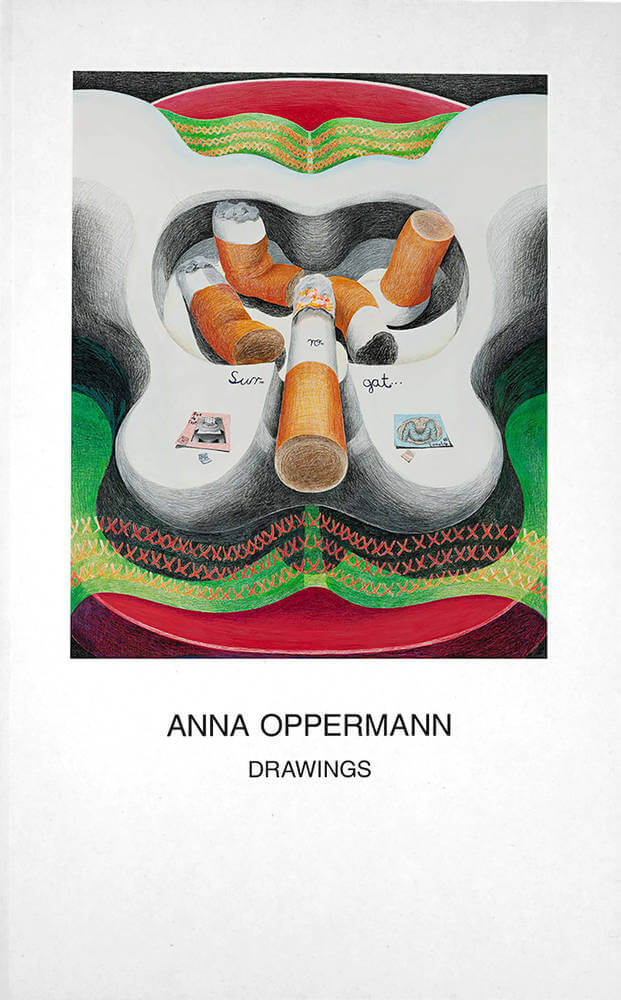
Anna Oppermann: Drawings
Surreal, psychedelic riffs on domestic objects from a trailblazing feminist artist.
From her beginning in the mid-1960s through the early '70s, German artist Anna Oppermann (1940-1993) - best known for her encyclopedic, immersive installations - created an astonishing series of surreal, almost psychedelic drawings that quietly explode the private space of the home, and her experience within it. These early drawings contribute to a feminist reentering of spheres traditionally associated with women, casting everyday objects as symbolic, consequential protagonists: houseplants sprawl to take over the picture plane, windows and mirrors provide views into other worlds and tables display drawings that themselves open out into new domestic scenes. By placing her own body—her knees, arms, the back of her head—as reference points in the work, Oppermann emphasizes the gendered realms of the home and the relationships that we form to our private spaces.
This volume gathers these drawings and early installations in an English-language publication for the first time.

Pasts, Futures, and Aftermaths: Revisiting the Black Dada Reader
The sequel to Pendleton's acclaimed Black Dada Reader, compiling an anti-canon of radical experimentation and thought.
In 2011, artist Adam Pendleton (born 1984) assembled Black Dada Reader, a compendium of texts, documents and positions that elucidated a practice and ethos of Black Dada. Resembling a school course reader, the book was a spiral-bound series of photocopies and collages, originally intended only for personal reference, and eventually distributed informally to friends and colleagues. The contents - an unlikely mix of Hugo Ball, W.E.B. Du Bois, Adrian Piper, Gertrude Stein, Sun Ra, Stokely Carmichael, Gilles Deleuze -formed a kind of experimental canon, realized through what Pendleton calls radical juxtaposition. In 2017, Koenig Books published the Reader in a hardcover edition, with newly commissioned essays and additional writings by the artist. A decade later, Pendleton has composed another reader, building upon the constellation of writers, artists, filmmakers, philosophers and critics that emerged in the first volume.
Source texts by Sara Ahmed, Mikhail Bakhtin, Toni Cade Bambara, Amiri Baraka, Augusto de Campos, Hardoldo de Campos, and Décio Pignatari, Angela Davis, Gilles Deleuze, Julius Eastman, Adrienne Edwards, Clarice Lispector, Achille Mbembe, Philippe-Alain Michaud, Charles Mingus, Piet Mondrian, Leslie Scalapino, Leonard Schwartz and Michael Hardt, Juliana Spahr, Cecil Taylor and Malcolm X.

Catalog issue 17 — ‘Introduction’
Catalog is a serial publication about cataloging, written by Lieven Lahaye and designed by Ott Metusala. This is Catalog issue 17, ‘Introduction’, it’s part of a sub-series, researching the life, work and near invisibility of writer Duncan Smith (1954–1991).

Catalog issue 19 — Shimmer, Slice, Accretion
Catalog is a serial publication about cataloging written by Lieven Lahaye and designed by Ott Metusala. This is Catalog issue 19: Shimmer, Slice, Accretion; it’s part of a sub-series on near invisibility. Formally, each publication is an offset-printed A2 sheet folded into a signature. The series will be compiled into a book. This is done in the trust that the presentations, talks and conversations that stem from one issue's publication will influence the next issue. And the next. And the next.

Auditing Intimacy
Office for Joint Administrative Intelligence
Auditing Intimacy is a collection of postal correspondence, photographs and declassified documents produced by Chris Dreier and Gary Farrelly between 2015 and 2020 under the banner of their shared practice The Office for Joint Administrative Intelligence. In a spirit of transparency and full disclosure, the publication contains a certified, independent and critical audit of the practice by Alicja Melzacka. The project was undertaken to commemorate the fifth anniversary of O.J.A.I.
Edited by Chris Dreier and Gary Farrelly
Artworks by Chris Dreier and Gary Farrelly
Essay by Alicja Melzacka
Design by Zero Desk
Documentation by Pauline Miko
Published by Fantôme Verlag
174 pages
Office for Joint Administrative Intelligence is the collaborative practice of artists Chris Dreier (DE) and Gary Farrelly (IRE/BE). The work is fuelled by a recurring obsession with architecture, infrastructure, finance, institutional power and DIY ritualism. O.J.A.I. pursues a strategy of self-institutionalisation where tools and codified rules of engagement are appropriated from economic and political infrastructures for the purposes of structuring intimacy and conjuring autonomy.

HOOT nr. 3 — Kamilé Krasauskaité
Gufo, Clément Faydit and 1 more
Last year, on a summer night in Marseille, someone, within all the hungry people I am meeting during my dinners, specifically set her attention on my projects. Later during the fall I received a call from Austė ZDANČIŪTĖ, the cultural attache at the Lithuanian embassy in France, who introduced me to Kamilè Krasauskaitè. Since that fall, we kept on exchanging and making future plans in France where she would have a residency. The more we chatted, the closest we began. Kamilè is a almost-thirty-years-old Lithuanian artist that has been including sourdough bread in her work and builds a poetic and mesmerising world around that dimension of food, fermentation, senses, environment, rituals...Through our communication I decided to share that encounter that we managed to welcome in Marseille. We kneaded some bread together, shared it in a forest of Marseillais sunflowers, walked the streets, met people, questioned and compared artists' lives in Europe. This issue might be an excerpt of all the long conversations we had, it was hot and sunny in Marseille, it was in June.